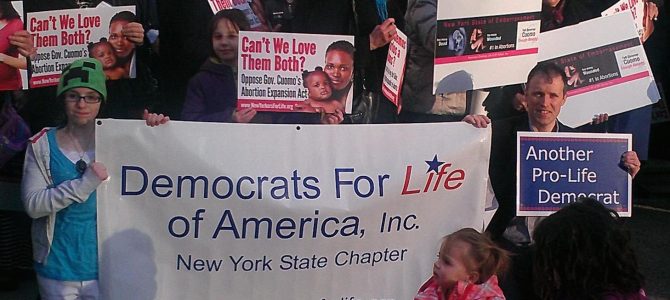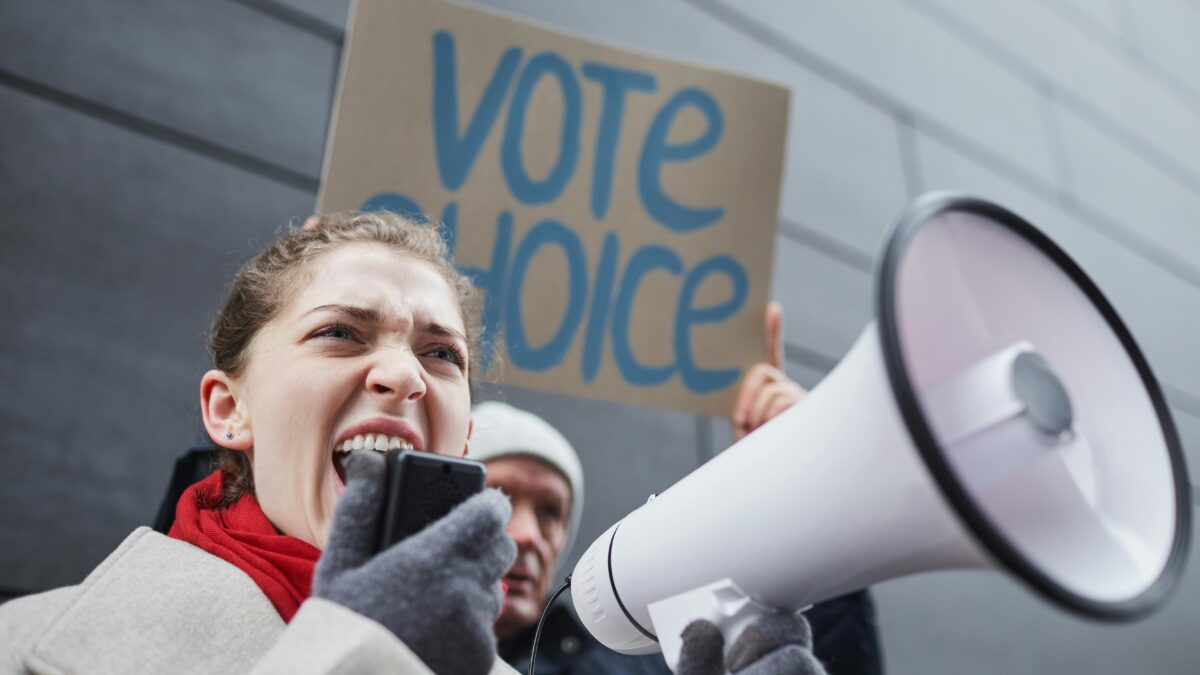
The United States has some of the most permissive abortion laws in the world. Most Americans do not support such policies. Seven-in-ten want abortion broadly illegal after week 12 of pregnancy, about 8-12 weeks before most current state thresholds.
Furthermore, Gallup recently found those “who would only vote for a candidate who shares their views on abortion” is at 21%, the highest number in the 19 year history of their asking the poll question. They also found 23% of pro-life Americans fall into this category, compared with 19% of Americans who identify as pro-choice.
This lean in favor of pro-lifers is likely to get stronger as Millennials come into their own. NARAL’s own research has found a profound “intensity gap” among young people on abortion—with 51% of pro-lifers considering the issue “very important” compared with only 26% of pro-choice Millennials.
The intensity gap is even stronger in favor of pro-lifers, obviously, in certain states and districts. James Thompson, a Kansas Democrat who ran in recent special election this week, made the race far more competitive than most anticipated. Trump won the district by 27 points, but Thompson only lost by 8 points.
In a Think Progress interview, Thompson blamed his lost on the “desperation” of the national Republican party paying for negative campaign ads which “attacked me on abortion, saying I support sex-selection abortion and late-term abortion and all of these things that I’ve never said, that riled up a lot of [pro-life] activists here and they were able to pull out a victory.”
Thompson may never have said this, but it is now an implication of his support the Democratic Party’s official position on abortion. This position not only calls for repeal of even our current modest restrictions, it insists that abortion at all stages and for any reason—as “core to women’s, men’s, and young people’s health and wellbeing”—must be paid for with pro-lifer’s tax dollars.
Though Thompson quite understandably does not want to be tainted with support for the right to sex-selection abortion and to kill a prenatal child who can feel pain and easily live outside her mother’s body, he was justly tied to those positions as a matter of Democratic orthodoxy and purity tests—as enforced by Planned Parenthood and NARAL.
These organizations got to Hillary Clinton early on in the 2016 campaign cycle—and, despite her past instance that abortion be “rare”, got her commitment to the above extreme positions and in return for their support. Indeed, both Planned Parenthood and NARAL helped beat back a challenge from Bernie Sanders, an insurgent candidate who rightly called them “the establishment” within the Democratic party.
Their support of Clinton, and resistance of Sanders, paid off. Cecile Richards and Ilyse Hogue were now making the rules. Abortion extremism and purity tests ruled the party.
And what a gift this hostile takeover was to Republicans and Donald Trump. How many hundreds of thousands of pro-life voters (20 million who identify as Democrats) in Wisconsin, Michigan, Ohio, Pennsylvania, Iowa, Florida, and North Carolina held their nose and voted for Trump? How many hundreds of thousands of pro-life non-conservatives—even if they would never vote for Trump—couldn’t be convinced to show up at the polls and vote for the party of abortion extremism?
Multiple factors contributed to Trump’s victory, of course, but it is almost certainly the case that the Richards/Hogue doctrine lost multiple states for the Clinton campaign.
Especially given the lack of pro-choice intensity in the next generation—and the disproportionately pro-life views of Latinos—the writing is now on the wall for all to see. If Democrats continue to enforce purity tests for their extremist positions on abortion, they will to be the minority party for the foreseeable future.
Opening The Big Tent
Sanders has enough independence from the Democratic Party establishment to call progressives to face the math on these questions and openly support pro-life Democratic candidates in certain districts. Yesterday he was joined by DNC chair Tom Perez in supporting Health Mello, a pro-life liberal running for mayor of Omaha.
The Richards/Hogue Inquisition pounced, bullying the 37 year-old Mello into walking back his pro-life voting history, a practice that is now all too familiar for pro-life Democrats. But it was too late. Sanders and Perez had made it clear that a more realistic wing of the party is fighting back against the abortion extremists who want to take it off a cliff. The runner up for the Democratic nomination for president, and the DNC chair, had openly and firmly supported a pro-life candidate.
Perez was clear: “In order to execute a 50-state strategy, we need to understand what’s going on in all 50 states, and attract candidates who are consistent with their messages but perhaps not on 100 percent of the issues. If you demand fealty on every single issue, then it’s a challenge.”
He and Sanders have history on their side. Howard Dean, DNC chair during the 2006 midterms, used a 50-state strategy to help Democrats recover from huge losses by going into what some considered Republican territory. And winning. This gave Democrats the kind of majorities necessary to pass big legislation like health care reform. Indeed, a full quarter of the Democratic House caucus voted for the pro-life Stupak amendment in 2009 and these very same people would go on to become the necessary votes pass the Affordable Care Act.
This Should Frighten Republicans
Without these pro-lifers, Democrats will continue to be the minority party, unable to advance the kind of legislation most progressives have on their agenda. Even something like paid family leave looks difficult to pass, with single-payer health care being an absolute pipe dream. But if the Perez/Sanders plan wins the day, pro-life non-conservatives stand ready to work with pro-choice liberals to work to enact such legislation—much like they did in 2009.
And they are there for the taking. Younger pro-lifers, in particular, are less likely to identify as conservatives or Republicans than are older pro-lifers. Even if they voted for Trump, huge pluralities did so with deep reservations, unsure of his actual position on abortion. Many are frustrated that the national GOP has refused to make abortion the priority they claim it is around election time, and are increasingly arguing that pro-lifers ought to dial down their loyalty to the Republican Party.
If Perez/Sanders gain serious traction with their plan to open the big tent on abortion, this should make small-government Republicans deeply uncomfortable. It will almost certainly threaten their majorities in 2018 and beyond.
And if successful, progressive programs like paid family leave, and even single-payer health care, will not be far behind.









